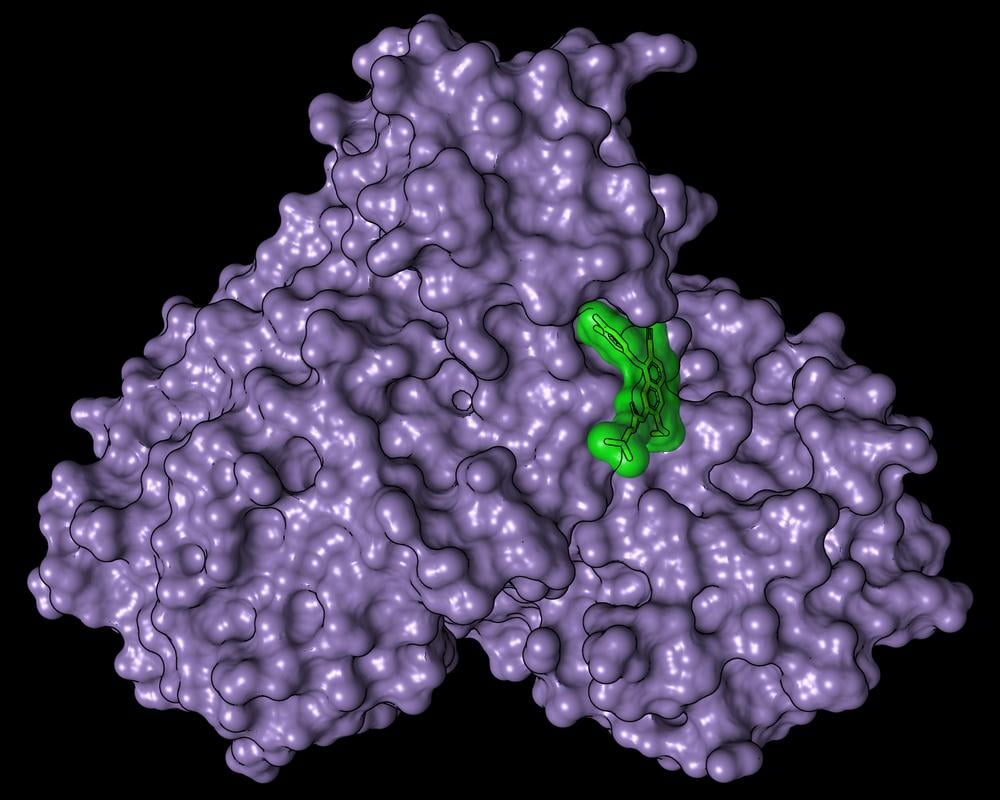
While more and more vaccines against the SARS-CoV-2 coronavirus are being used around the world, research into drugs to combat COVID-19 does not seem to be yielding decisive results. Various existing agents that physicians had high hopes for have not proven effective in practice. For example, an HIV drug with the active ingredient combination lopinavir / ritonavir was dismissed as ineffective. The same was true of several malaria drugs with the active ingredients chloroquine and hydroxychloroquine, some of which even made the disease worse. But now a research team at DESY has apparently made progress with the help of the PETRA III X-ray light source and has identified several possible candidates for active agents to fight SARS-CoV-2.
In a short period of time, they tested nearly 6,000 agents already being used to treat other diseases and, after measuring about 7,000 samples, identified a total of 37 substances that bind to the main protease (Mpro) of the SARS-CoV-2 virus. Seven of these substances slowed down the proliferation of the virus and stopped it from spreading further in the patient’s body. Two of these substances are already currently being further investigated in preclinical studies. “What is probably the largest drug screening of its kind also brought to light a new binding site on the main protease of the virus to which drugs can dock,” the scientists write online in the renowned journal “Science.”
Since viruses cannot reproduce on their own, they introduce their genetic material into the cells of their host and induce them to produce new viruses. Proteins such as the main protease of the virus play a crucial role in this process. It cuts protein chains into smaller parts that were produced by the host cell according to the blueprint of the viral genetic material that are necessary for reproducing the virus. If this main protease is blocked, the virus can no longer replicate and the infection is eliminated.
Three-dimensional spatial structure of proteins
The PETRA III research light source can be used to visualize the three-dimensional spatial structure of proteins with atomic precision. The researchers led by DESY physicist Alke Meents took advantage of this capability and examined several thousand known active substances from libraries at the Fraunhofer Institute for Translational Medicine and Pharmacology and the Italian company Dompé Farmaceutici SpA to see whether and how they could dock to the main protease and then also be blocked. Like a key in a lock, the drug molecule fits into a binding center of the protease, they explain.
The advantage of the drug library is that suitable candidates for combating SARS-CoV-2 could be used in clinical trials much more quickly since all the substances are already approved for treating humans or are at least already in various trial phases. This could save months or even years of drug development. “Using a high-throughput approach, we were able to find a total of 37 compounds that bind with the main protease,” says Meents, who initiated the experiments.
Next, researchers at the Bernhard Nocht Institute for Tropical Medicine examined the extent to which the active ingredients inhibited or even prevented viral replication in cell cultures and how compatible they were with the host cells. In the end, seven active ingredients remained, two of which stood out in particular. “The active ingredients calpeptin and pelitinib clearly showed the highest antiviral qualities with good cell compatibility,” explains DESY researcher Sebastian Günther, principal author of the publication in Science. “Our collaboration partners have therefore already started preclinical studies with these two compounds.”
Previously unknown binding site found
During their drug screening, the scientists were also in for a big surprise. They found a binding site on the main protease that was previously completely unknown. “It was not only a positive surprise that we were able to discover a new drug binding site on the main protease – a result that can only be achieved by a synchrotron light source such as PETRA III – but that even one of the two hot drug candidates binds precisely to this site,” says Christian Betzel from the CUI Cluster of Excellence at the University of Hamburg, co-initiator of the study.
“A particular strength of our method of X-ray screening compared to other screening methods is that we obtain the three-dimensional structure of the protein-drug complexes as a result and can thus determine the binding of the drugs to the protein at the atomic level,” explains Patrick Reinke, DESY researcher and co-author of the paper.
“Even if the two most promising candidates do not make it into clinical trials, the 37 substances that bind to the main protease will form a valuable database for drug developments based on them.”
In addition to DESY scientists, researchers from the Universities of Hamburg and Lübeck, the Bernhard Nocht Institute for Tropical Medicine, the Fraunhofer Institute for Translational Medicine and Pharmacology, the Heinrich Pette Institute, the European XFEL, the European Molecular Biology Laboratory EMBL, the Max Planck Society, the Helmholtz Center Berlin and other institutions are involved in the work. In addition to the experiments at the P11 measurement station, measurements were also performed at the EMBL measurement stations P13 and P14 at PETRA III.
Cover photo: surface representation of the corona main protease (purple) with bound drug pelitinib (green). Image: DESY, Sebastian Günther
More articles on the topic of the coronavirus pandemic and SARS-CoV-2 can be found here.

